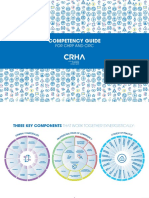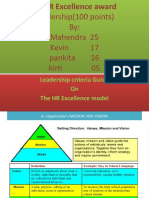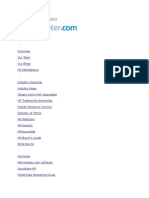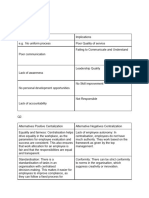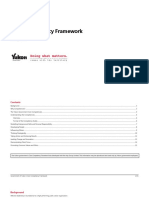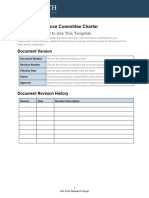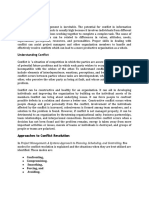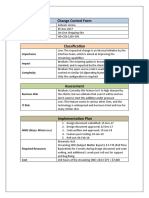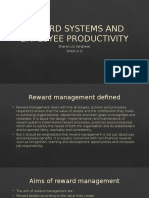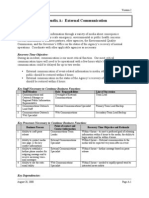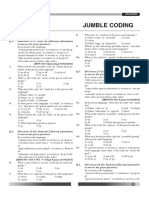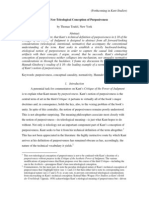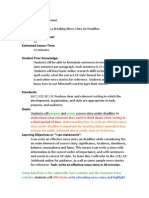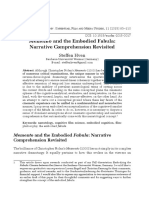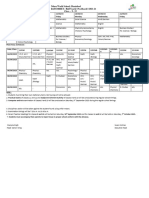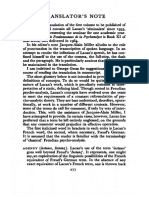0% found this document useful (0 votes)
187 views9 pagesCompetency Based Performance Management
This document discusses competency-based performance management. It outlines how competencies can be used in performance management to establish performance levels, measure and manage performance, and align goals. Critical competencies are identified through ranking and comparison methods. Performance is usually measured by achievement of objectives and behavioral performance. Information for performance reviews can come from questionnaires, records, observations, and discussions. Competencies are assessed through multi-rater feedback from individuals like the job holder, peers, managers, suppliers, and customers. Competencies and outputs are rated on a scale from 1 to 5. Statistical analysis shows actual performance only accounts for 21% of performance rating variance, while individual rater biases account for 62% of variance.
Uploaded by
Mansi JainCopyright
© © All Rights Reserved
We take content rights seriously. If you suspect this is your content, claim it here.
Available Formats
Download as PPTX, PDF, TXT or read online on Scribd
0% found this document useful (0 votes)
187 views9 pagesCompetency Based Performance Management
This document discusses competency-based performance management. It outlines how competencies can be used in performance management to establish performance levels, measure and manage performance, and align goals. Critical competencies are identified through ranking and comparison methods. Performance is usually measured by achievement of objectives and behavioral performance. Information for performance reviews can come from questionnaires, records, observations, and discussions. Competencies are assessed through multi-rater feedback from individuals like the job holder, peers, managers, suppliers, and customers. Competencies and outputs are rated on a scale from 1 to 5. Statistical analysis shows actual performance only accounts for 21% of performance rating variance, while individual rater biases account for 62% of variance.
Uploaded by
Mansi JainCopyright
© © All Rights Reserved
We take content rights seriously. If you suspect this is your content, claim it here.
Available Formats
Download as PPTX, PDF, TXT or read online on Scribd
/ 9
